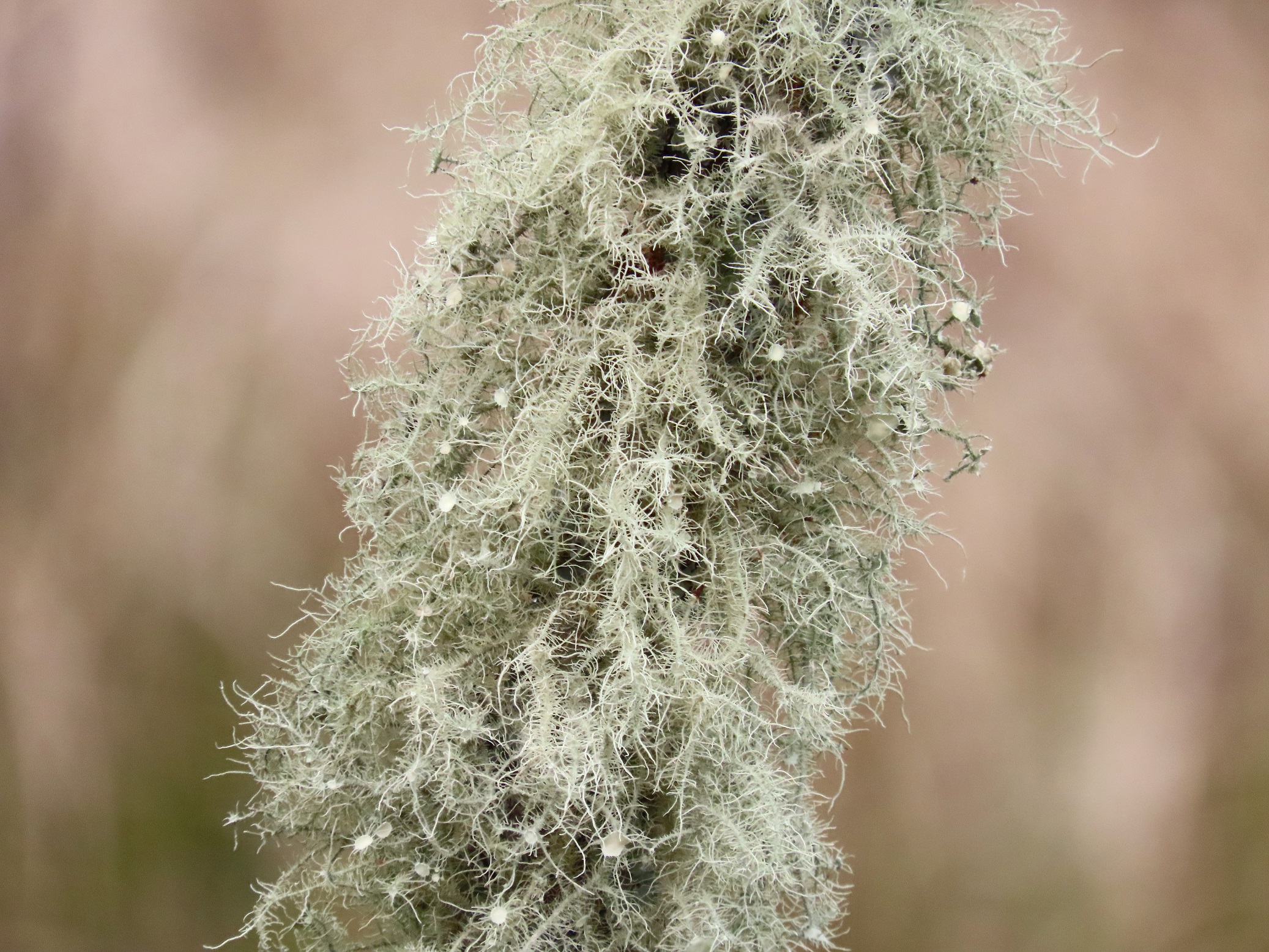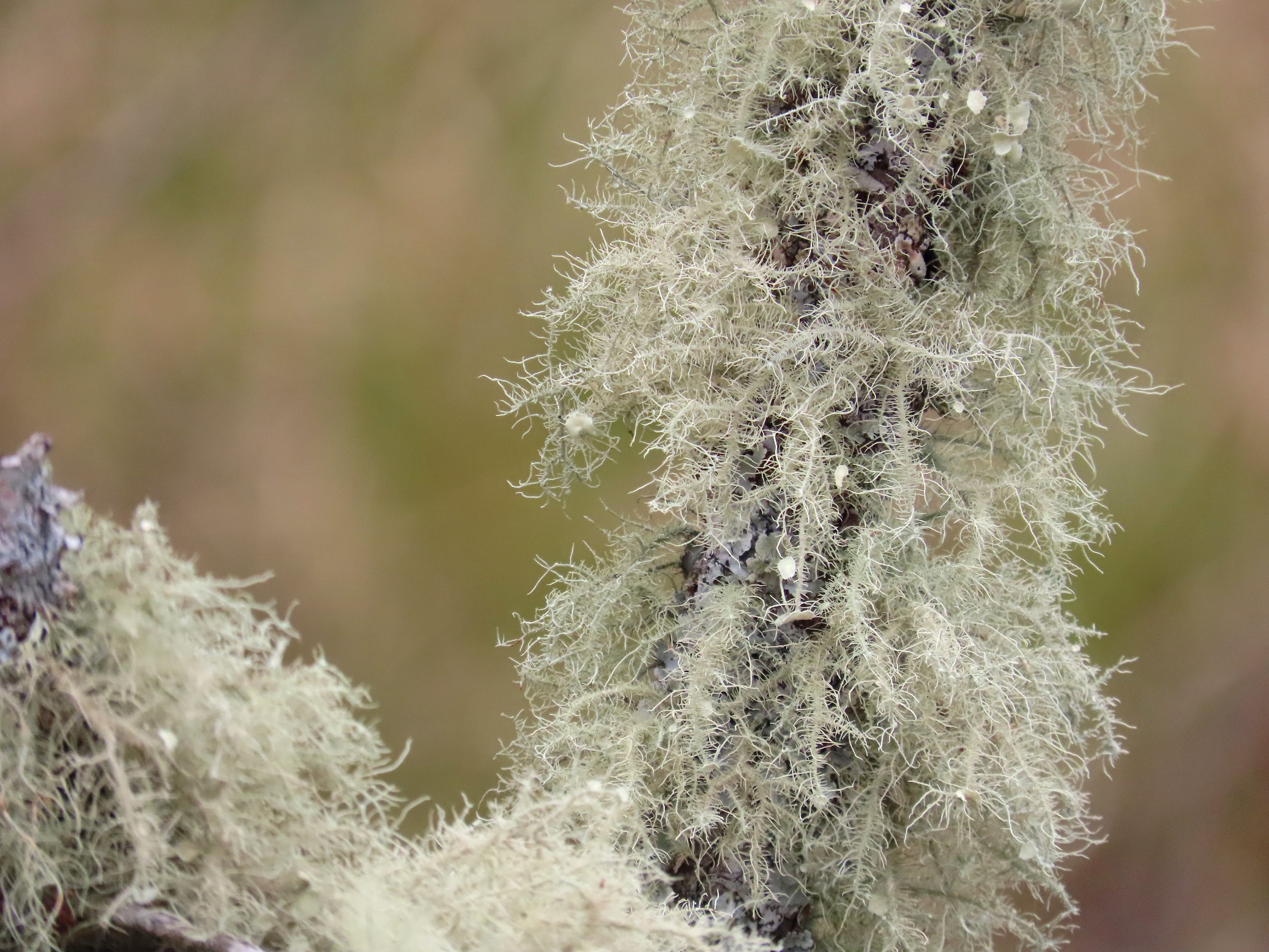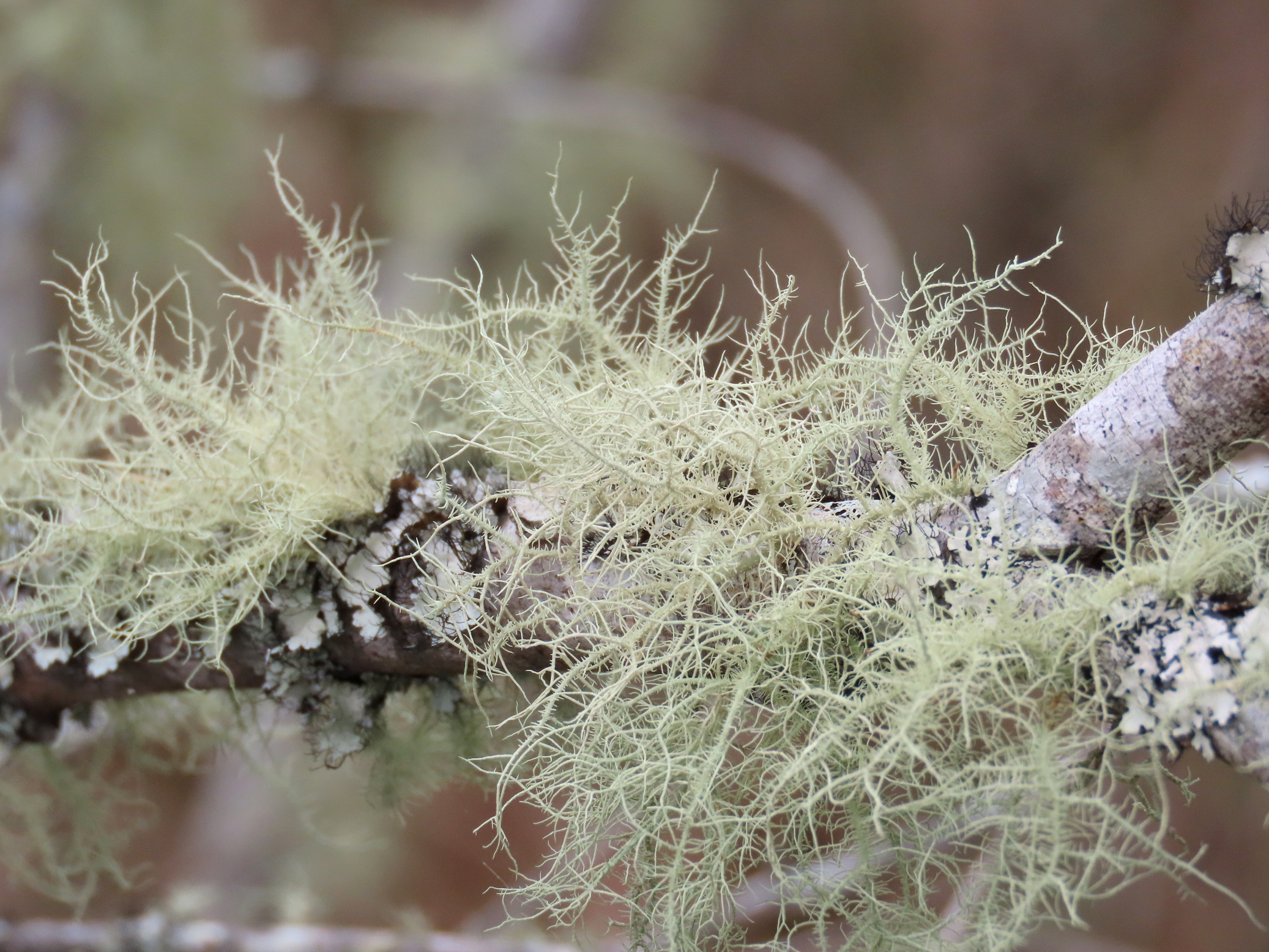




This week for Flora and Fauna Friday it’s our most widespread Lichen in the Lowcountry, Bushy Beard Lichen (Usnea strigosa).
Beard Lichens can be found in humid forests all throughout the Southeast. This genus, Usnea, contains a multitude of similar looking species that range around the globe and with several found here on the Sea Islands of South Carolina, including Bushy Beard Lichen (U. strigosa), Coastal Beard Lichen (U. evansii), Horned Beard Lichen (U. subscabrosa), and Cryptic Beard Lichen (U. endochyrsea). Today I’ll be focusing primarily on Bushy Beard Lichen, our most common species. Beard Lichens are epiphytes, growing on the bark of trees, particularly small branches and buttresses. Like other epiphytes, they cling to bark purely for support. They absorb their nutrition from the air and rainwater that washes over them and produce food through photosynthesis.
I often find Bushy Beard Lichen growing in floodplains, bottomland forests, and maritime fringes. Its fungal façade is a pale platinum-white with a subtle greenish hue and takes on a fluffy, beard-like form. This lichen’s body is finely divided into roughly inch-long feathery tendrils to increase its surface area, for efficiently gathering both light and water. Bushy Beard Lichen often has many small circular discs, embedded in its body. These structures are called apothecia and are its primary spore-bearing structures. Its “mushrooms” if you will. Their abundance helps you to tell Bushy Beard Lichen apart from other members of the Usnea genus, as most of our other species reproduce with different spore-bearing structures and rarely have the dish-like apothecia in number.
Because of their epiphytic nature and reliance on rainwater and humidity for nutrition, Beard Lichens, and other similar epiphytic lichens, are very sensitive to poor air quality and pollution in rainwater. You won’t find them growing above a well trafficked road, due to car exhaust filtering through them, or in urban areas, with increased acid rain and smog. But on Edisto Island, they abound, high above, on the boughs of oaks in the peaceful woodlands along our backroads, and at arm’s reach, in the windswept margins of our maritime forests.
On an aside, I want to talk about Lichens in general for a bit and add a disclaimer to the above. I’ll be the first to tell you, I don’t much about Lichen taxonomy. To be frank, almost no one does. Lichens are a fascinating and strange life form, referred to as a compound organism. They are a fusion of a photosynthetic microbe, an alga or cyanobacteria, and a specialized fungus, with the fungus wearing the proverbial pants in this relationship. This arrangement is similar to how corals operate, but far more advanced and intertwined. The fungus has ostensibly turned its body into a greenhouse and is growing a special strain of photosynthetic microbe within its body. Complex symbiosis and natural co-evolution like this is quite amusing to ponder upon, but that’s a rabbit hole and monologue for a different day. In regards to Lichens, this makes studying and discerning different species of Lichen very complex. Since there are multiple organisms acting as one, what qualifies as the “species” becomes nebulous and breaks down most taxonomic definitions of what a species is. My above account of Bushy Beard Lichen (Usnea strigosa), I can tell you, for a fact, is really a description of a species complex containing at least one other extremely similar looking species, Cryptic Beard Lichen (U. endochyrsea), but likely also several more and probably something currently undescribed. Point being, biologists ain’t figured these things out yet! Advances in gene sequencing and phylogenetic techniques are coming along swiftly these days and more and more attention is being put to topics like this with each passing year. So maybe, in the next few decades, we’ll finally have a solid idea of the biodiversity of Lichens and hopefully some kind of handle on how to even define symbiotes like these taxonomically.